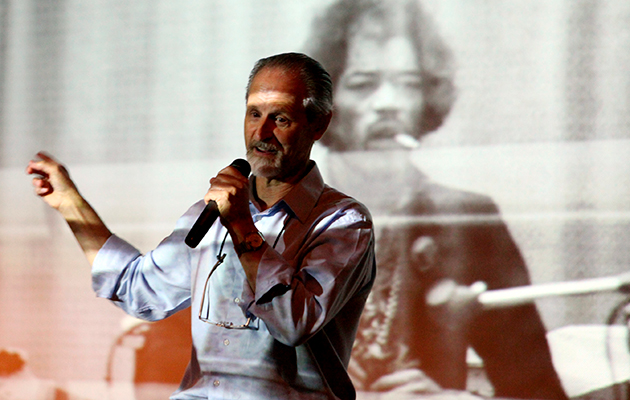Originally published in Uncut's April 2016 issue (Take 227) "If you want to analyse great bands,” says Kramer, recalling his work with the likes of The Rolling Stones, Led Zeppelin and Traffic, “you always come to the conclusion that they have these wonderful elements that are often polar oppos...
Jimi Hendrix Experience
Electric Ladyland
Track, 1968
Relocated to New York City, Hendrix and Kramer construct the guitarist’s masterpiece
I left England to go to America to continue working with Jimi in 1968. And all of sudden I’m jumping from four-track to 12-track and – holy crap! It was amazing! Jimi’s concept for Electric Ladyland was to try to involve friends and musicians who he trusted. But he had a unique way of testing it out in advance. Jimi would book the session for a seven or eight o’clock start, and he wouldn’t show up ’til midnight, but he had a plan. New York City is on a grid, so imagine you’re going up 8th Avenue to 44th Street. Eighth was where the Record Plant was, and two blocks away north up on 46th Street was a club called The Scene. Jimi would be there at nine o’clock and jam until midnight, sussing out who the cool musicians were. On one particular night we had everything set up ready for him. He was up at The Scene jamming, and fortunately Steve Winwood showed up, with [Jefferson Airplane’s] Jack Casady on bass and a few other stragglers, and Jimi says, “Oi! You come with me, just follow me down to the studio.” You can imagine the line of people walking down 8th Avenue – Jimi leading the pack with his hat and his feather and
his guitar and everything, walking into the Record Plant. And we were ready to go within literally five or ten minutes of checking the sounds: one rehearsal, one take, dang! There it is! “Voodoo Chile”! That is how rock’n’roll should be recorded. None of this bollocks, you know, one track at a time in your basement, and using samples – fuck all that. It’s nonsense. Obviously, there are times when you have a song – like “1983… (A Merman I Should Turn To Be)” – that needs that type of attention to detail when you’re layering it, but with Jimi there was always a plan. He always had something figured out, and he always carried with him a big yellow legal pad, and would write down the structure of the song; what went where, who played what. So he had it in his head, he knew exactly what he wanted to do – it was just a question of me trying to be on top of it and interpreting what he wanted and just going with the flow.
_________________________
Led Zeppelin
II
Atlantic, 1969
Recorded on the road, Kramer engineers the Zep’s pioneering second
My relationship with Jimmy Page and John Paul Jones goes back to Olympic in ’67 where they were session musicians, and I recorded them. Certainly John Paul Jones and I were good friends. I remember he called me when he’d just finished the first record and he said, “Come over to the flat and listen to this.” So I went over and I listened and I went, “Bloody hell! What’s that?” “It’s the new band, Led Zeppelin.” I said, “Christ almighty! That’s a stupid fucking name! Why would you want to call a band that?” Boy, was I ever wrong. Anyway, it was genius when I heard it. Then they came over to the States in ’69, I got a call from their office asking if I could help finish the recording for Led Zeppelin II. We cut some more tracks, I overdubbed a whole load of stuff onto the other tracks and we mixed the whole record at A&R Studios in New York City over a weekend. Led Zeppelin II was recorded in about 5,000 studios… Not literally, but it seems as if it was, you know. There was stuff done on the road, Vancouver, Los Angeles, etc, and I had to put all that together to make it sound like it was coming from a good source. So that was part of the challenge. The use of panning and reverb was something I loved to do. Certainly I did a lot of it with Jimi Hendrix and then, of course, carried it on with Mr Page – he and I always got on very well. It was a delight working with him because he was so precise. He knew exactly what he wanted.



